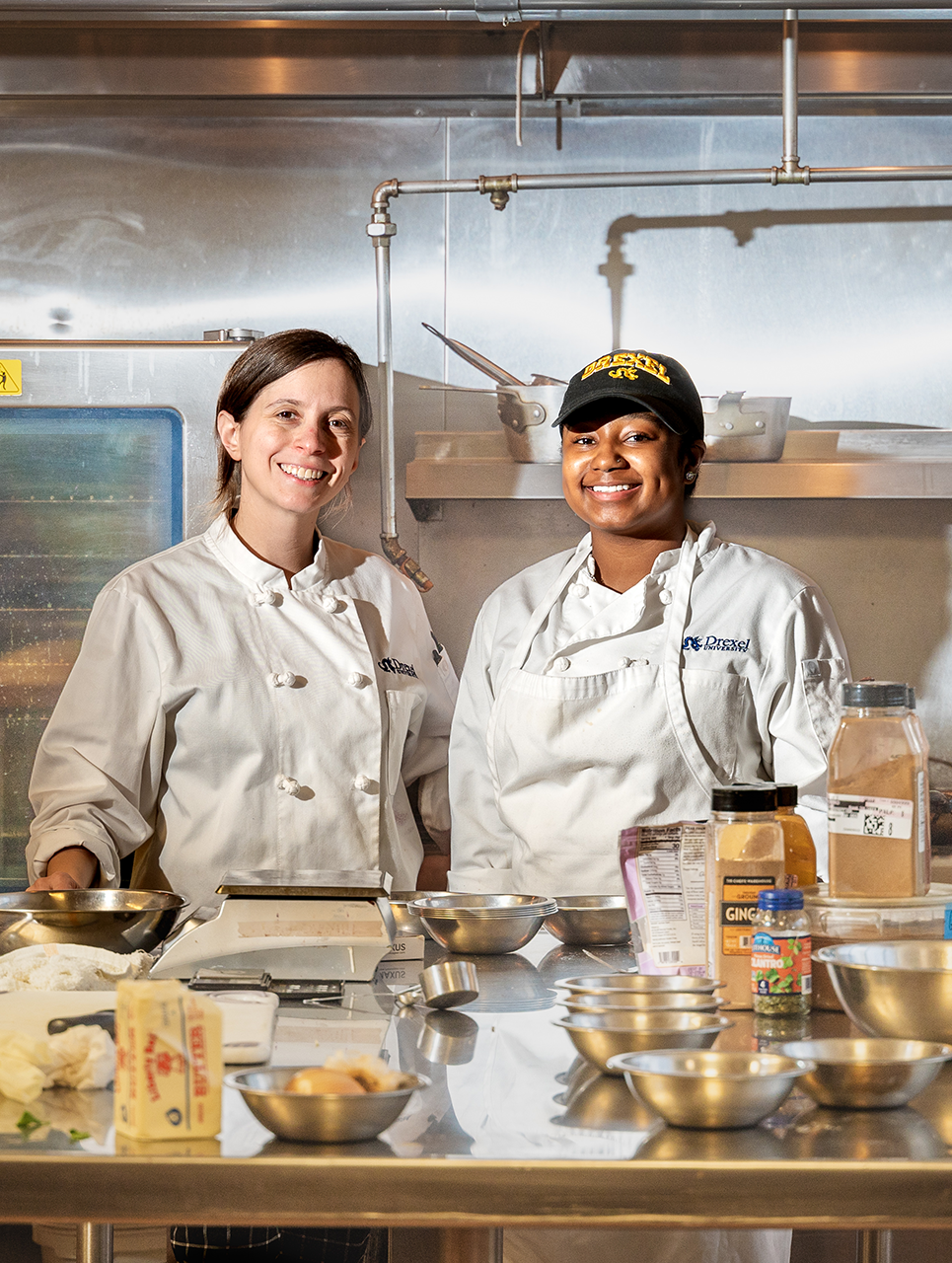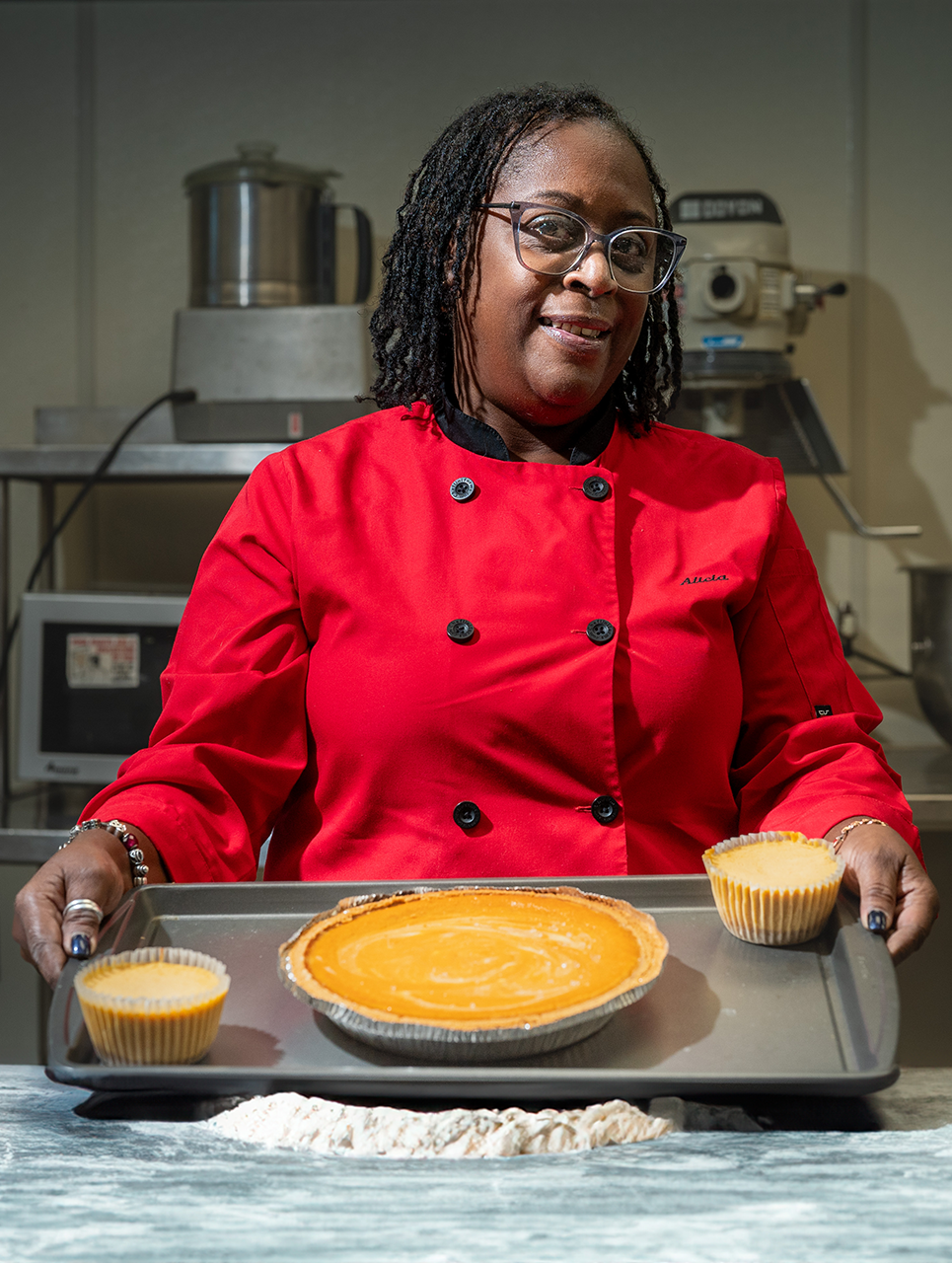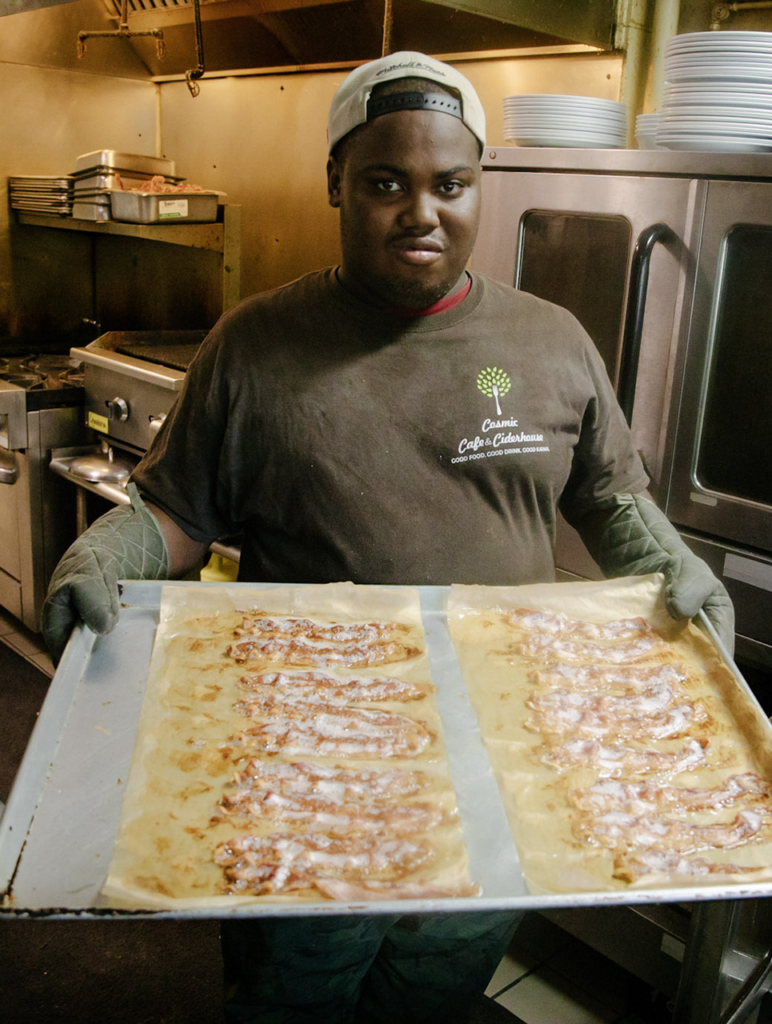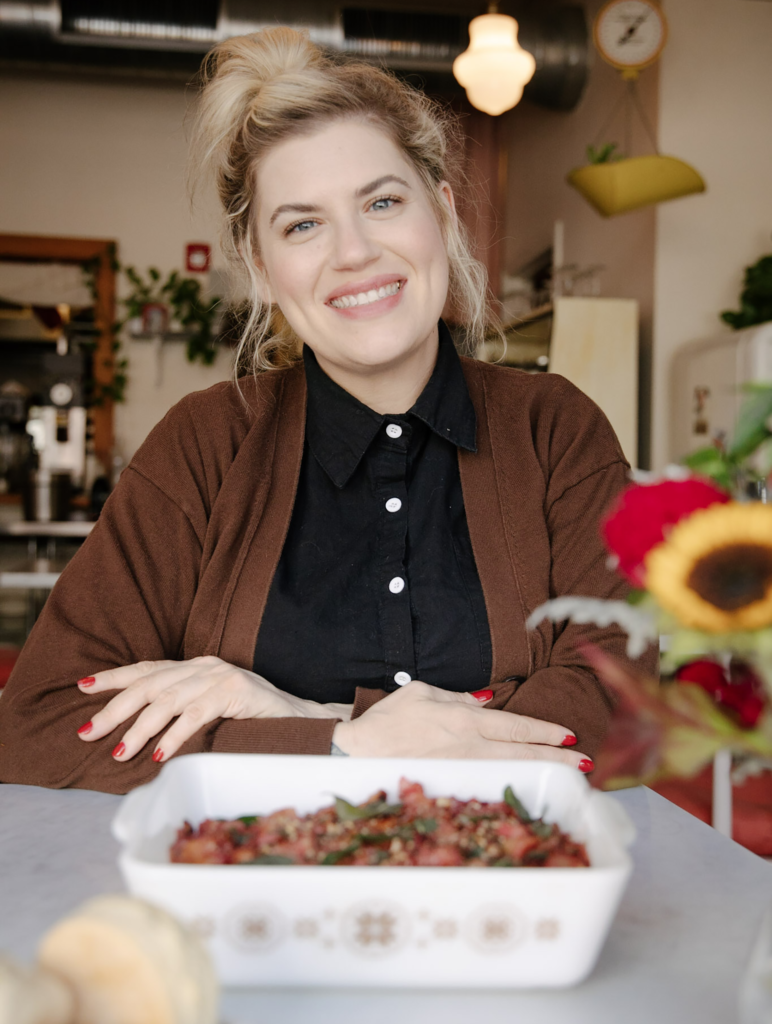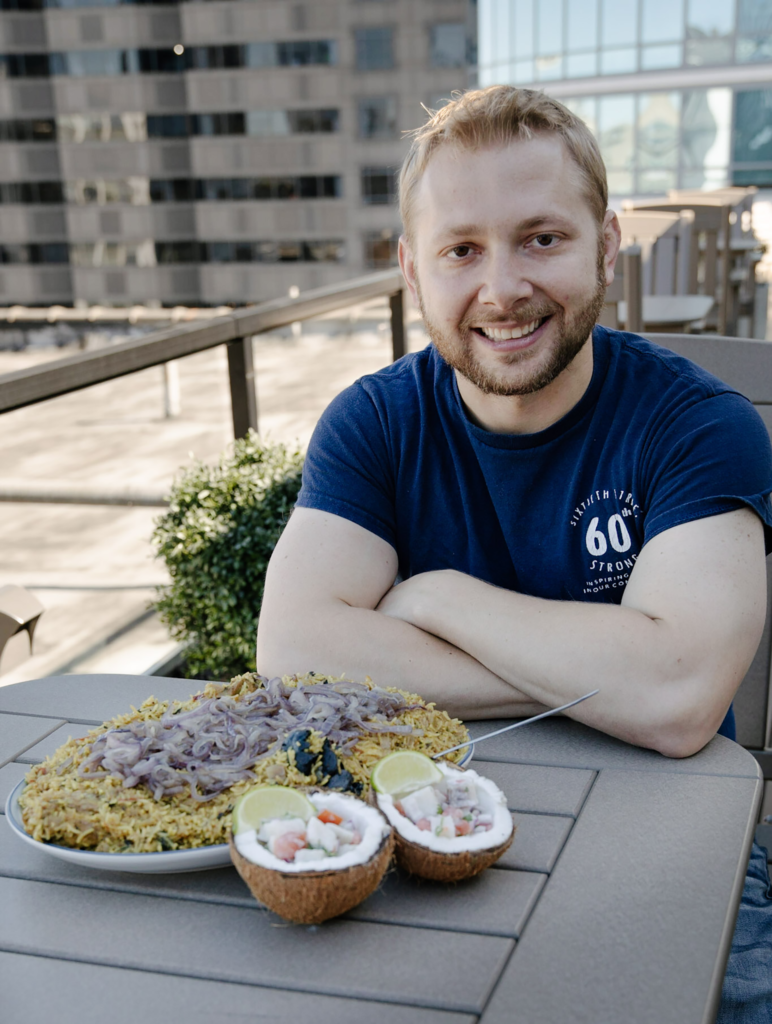Jonathan Deutsch, the head of Drexel University’s Food Lab, likes to challenge his culinary arts students with cauliflower stems and other trimmings they too-hastily discard. “I’ll pull things out of the compost bin and I’ll say, ‘Look at this. What could we do with this?’” Deutsch asks the students what they could make with the rescued cauliflower bits. Could they be stir fried? Could they be puréed to form the base of a soup?
Avoiding food waste doesn’t come naturally to most Americans; since 2015, the food lab has been working to change that.
The lab’s work on the waste problem started as a collaboration with the regional EPA office, which was trying to get excess food to people experiencing food insecurity. According to Deutsch, the program “was very efficient at moving food … from people who had too much of it to people who needed it,” he says. “It was much less efficient at making sure that people who got that food actually used that food.” The lab stepped in to provide technical assistance to soup kitchens and food pantries receiving the donated food — work that continues today.

Much of the lab’s education for households boils down to teaching people to think like a chef. Someone who runs a commercial kitchen might look at a pile of kitchen scraps and see the foundation of a stew or a stir fry, while the typical consumer might just see garbage. “Our project is to help these groups skill up … around these issues,” Deutsch says.
The scraps in the compost bin or the expired milk that gets poured down the drain might not seem like much waste on its own, but these items add up. Americans waste 133 billion pounds of food annually, according to the USDA. That’s between 30 and 40% of all the food the United States produces.
The average household of four people is throwing away $1,500 a year on wasted food.”
— Roni Neff, associate professor, Johns Hopkins University
All that waste takes up space in landfills and produces methane, a powerful greenhouse gas. And it’s a waste of the land, water, pesticides and energy that went into producing it — and the money spent purchasing it.
“The average household of four people is throwing away $1,500 a year on wasted food,” says Roni Neff, an associate professor at Johns Hopkins University’s Bloomberg School of Public Health. In the meantime, about 10% of U.S. households are food insecure.
Of course plenty of food hits the dumpster before it gets to the consumer. The lab is educating chefs taking part in the Sustainable Business Network of Greater Philadelphia’s Food Saver Challenge, in which restaurants, markets, bakeries and other food businesses compete to cut their waste.
Supermarkets also end up wasting food as they try to lure shoppers with the appearance of abundance. For example, at seafood counters, most of the fish on display arrives frozen but is thawed out to look fresh. “People still want to see these huge abundant displays of fish,” Deutsch says. Much of that highly-perishable seafood — which could have lasted for months frozen — ends up getting tossed. “You will save money and have safer and better quality fish if you just buy it frozen and defrost at home.”

The food lab recently developed recipes using what consumers typically think of as food scraps for the South Philadelphia Food Co-op. According to the lab’s research chef Rachel Sherman, their innovations include jam made with strawberry tops and a citrus salt made from lemon or orange peels. The lab is also collaborating with Neff at Johns Hopkins and a Drexel nutritionist to develop a video series, funded by a grant from the EPA, to teach the skills and attitudes for households to cut food waste. “Part of the theme of this grant is the idea of building motivation, opportunity and ability to reduce waste,” Neff says.
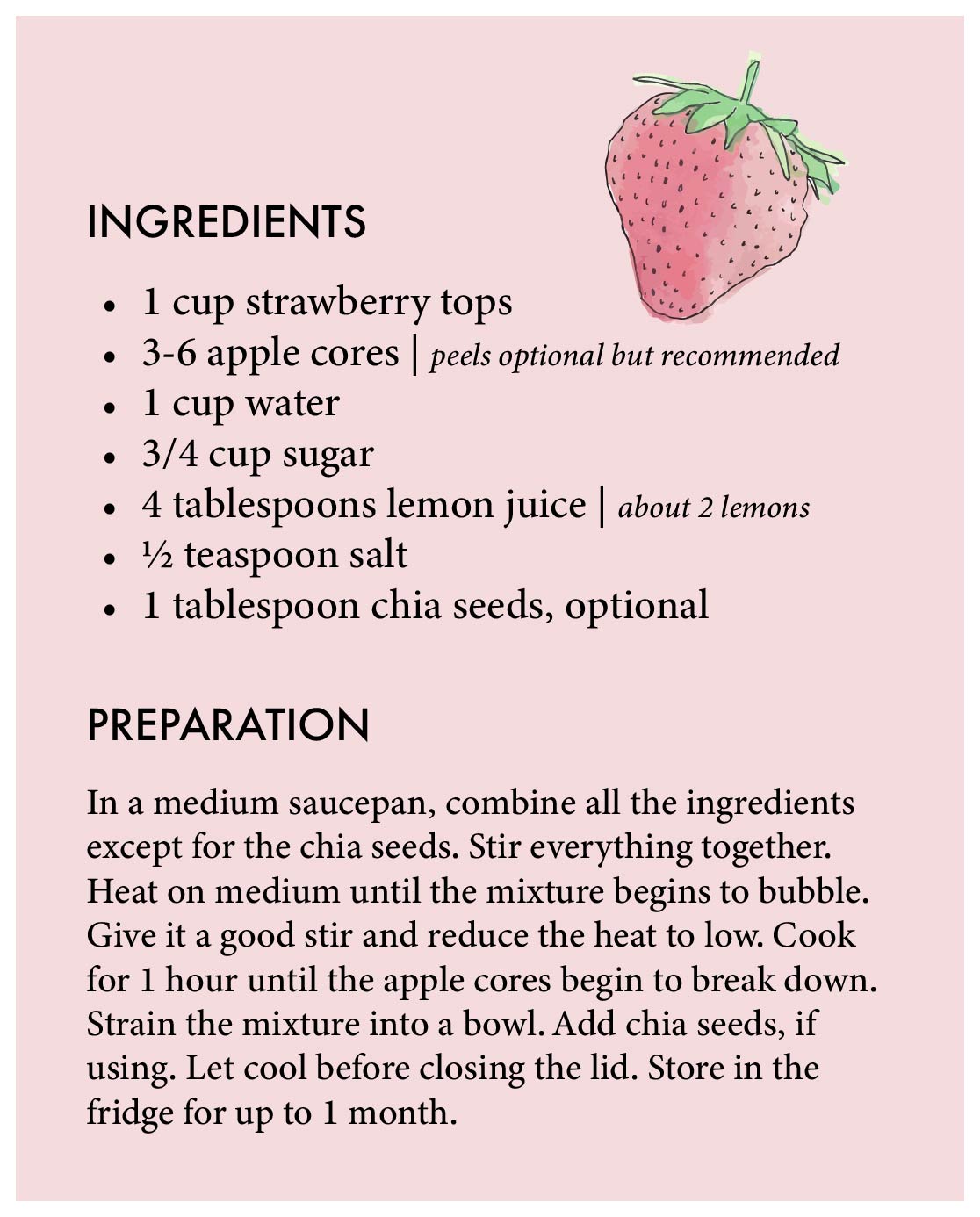
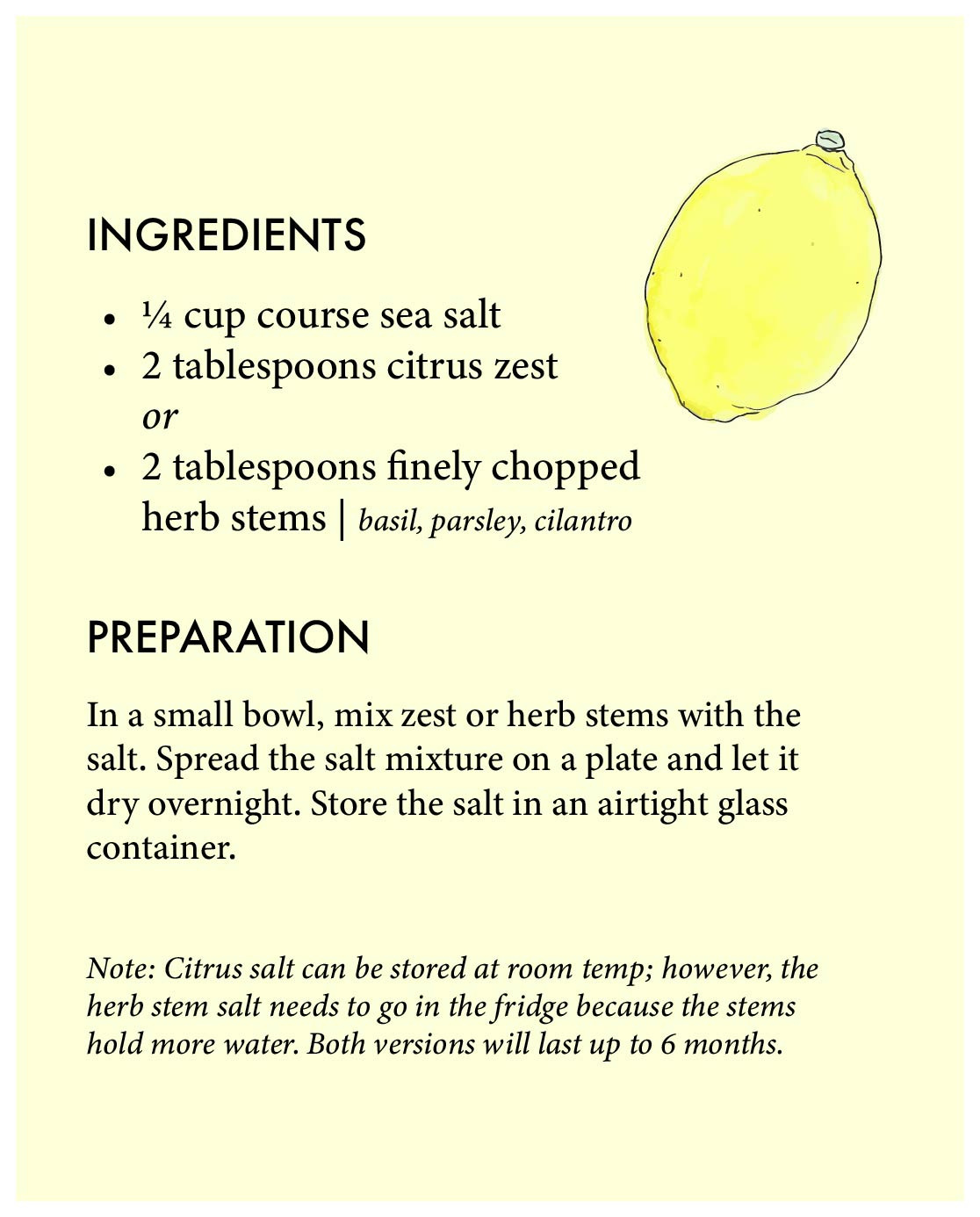
Scrappy Tips for the Home Cook
1. Cook What you Have
“A lot of people start with ‘what do I want to make for dinner tonight?’ and they feel like making a roast chicken, mashed potatoes and broccoli. So they go to the store and buy all those things,” Deutsch says. But they buy more potatoes than they need and the rest end up sprouting in the pantry. The chicken carcass, which could have been saved for stock, ends up in the trash. Instead of shopping to cook whatever dish you just saw someone make on social media, base your meal on the ingredients already you have in your kitchen.
2. Bulk Isn’t Always Best
It can be tempting to snag a great deal by buying a large quantity of ingredients at the bulk grocery store. The giant tub of cheese curls is way cheaper than if you bought the same amount in multiple smaller containers, right? But will you get to the bottom before they get stale and lose their crunch? “One of the reasons people have what they think is expired food in their pantry or in their fridge is that they’re over-buying,” Deutsch says. “A good technique is not to do the giant stock-up missions and over-buy, but to look at what you need.”
3. Ignore the Dates
Those dates printed on food packages look official. It can take some courage to drink the milk when it might be “expired,” but if it smells good and tastes good, it’s almost certainly fine to consume. Neff says that the dates printed on food packages aren’t about safety. “The labels, generally speaking, … are the date when quality might decline by a level that would be imperceptible to a lot of people,” she says. There are some exceptions for which safety could be a concern, like soft cheeses or deli meats, she says, but “people are throwing out amazing quantities of food based on misperceptions of the date labels.”
4. Cook Mindfully
Do you stop and think about what you put in your body? Is it healthy? Was it produced sustainably? You can do the same when you cook, Deutsch says. “You might cook just the cauliflower florets, but you look at that core and at those leaves and say, from a mindfulness perspective, ‘What can be done with these? What is the potentiality of these ingredients? Can I steam them? Can I boil them and mash them? Can I fry them? Can I sauté them?’”

